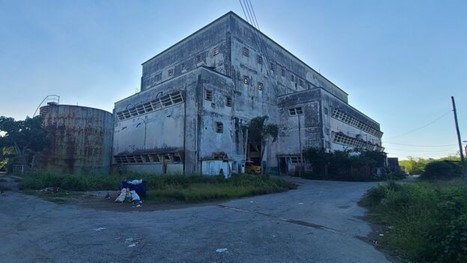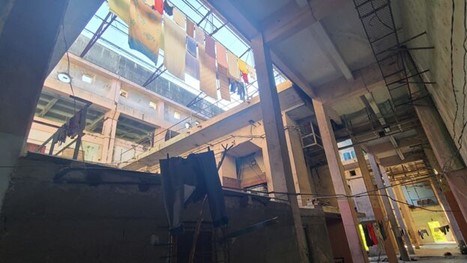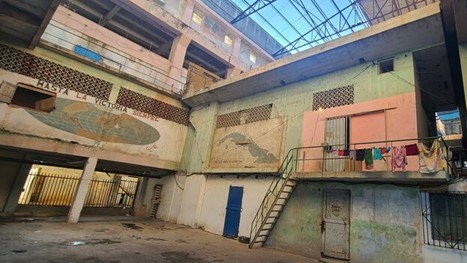Abandoned Thermoelectric Plant in Havana Serves as Homes

The 50 residents do not have a ration booklet or running water, “although we do pay for the electricity”.
HAVANA TIMES – The abandoned site of the Frank País thermoelectric plant, a mass located in the vicinity of Havana Bay, could serve as the setting for an apocalyptic film. However, a rusty armchair next to a turbine, two recently used buckets, and lines hung with clothes, are signs that several families live inside the building – presided over by a colossal map of Cuba and a globe.
“Around 50 people, more or less,” estimates Jorge, a 67-year-old retiree who used to work – like most of those who live in Frank País – for the capital’s Electric Company. “There are 18 houses,” he adds, alluding to the headquarters cubicles converted into homes. Without privacy or the usual conditions, of course, but at least, he claims, they have a space.

In the old thermoelectric plant, built by a North American company in the 1950s and closed in 2001, people live under the persecution of being destitute. “We don’t have a ration book or water, although we do pay for the electricity,” says Jorge. The entire area is precarious. To get to the Frank País plant you have to follow a route that starts from the Casablanca pier, on the other side of Havana bay. The desolate faces of those who reside in the flimsy wooden houses, on both sides of the road, give the measure of the area’s misery.
“This building is still property of the Electric Company,” Jorge clarifies. “Neither the Government nor Housing have wanted to ’take it on’.” This absence of authority to complain to has caused the families’ situation to remain in limbo. They have been waiting for a response for more than 20 years, when the authorities allowed them to occupy the plant, which had been left inactive during the Special Period in the 1990s, after operating for several years as an electrical substation.

Frank País now belongs to the jurisdiction of the Electric Company of San José de las Lajas, the main municipality of Mayabeque. “But they don’t care and they are not going to take care of us,” warns Jorge, who is concerned about the gigantic aluminum sheets that serve as the roof of the facility. “They are a danger,” he adds, unlike the structure of the plant, which remains firm “because the Americans built it.” Although it should not be neglected, since the building “was completed by Che.”
Among all the residents of Frank País, only Jorge is willing to talk to 14ymedio. The others dodge any questions and first demand “permission from the Electric Company” that authorizes them to offer statements or appear in photographs. They all have the same problems, Jorge laments: “Leaks, mosquitoes, dirt. This here is a disaster.”

Unlike other precarious properties in Havana, the Government has never tried to evict them. “Here we were all workers at the Electric Company, or family members,” Jorge emphasizes. However, the obstacles to receiving the food quota through the rationing system are insurmountable. The retiree considers it a relief that, after much asking, they have given him a “card for the ’module’,” his small monthly food allowance.
Crime and misery have hardened the residents of the plant, who have welded iron bars over the cubicle doors. The most reliable example is offered by Jorge: “When there is a cyclone, no one cares anymore. What are we going to do?” The roof eaten away by saltpeter, the lack of maintenance of the building and the absence of basic habitability conditions are a daily danger to life. Next to the faded map of Cuba, there is a slogan that defines life in Frank País: “One hundred years of struggle.”

Translated by Translating Cuba





